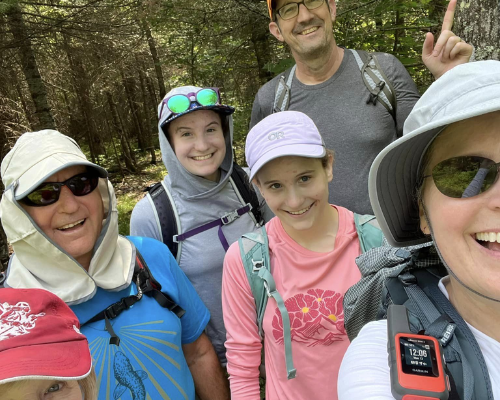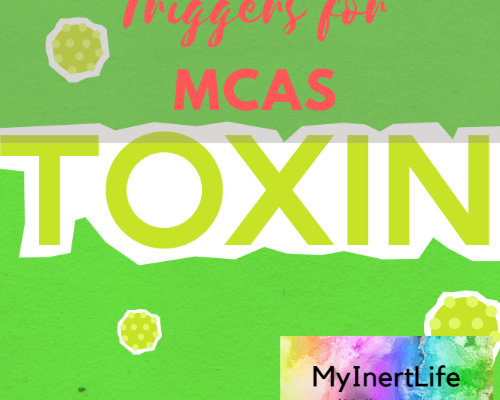This post is Day 8 Backpacking the SHT continues my journey on the Superior Hiking Trail with a chronic condition called Mast Cell Activation Syndrome (MCAS).
Table of Contents
What is MCAS?
Mast Cell Activation Syndrome (MCAS) is a chronic condition that affects all organ systems. MCAS is serious and disabling and people with MCAS experience often significant and debilitating symptoms daily, including anaphylaxis, which can be fatal.
MCAS is often found in combination with other chronic conditions such as Ehlers-Danlos Syndrome (EDS) and Postural Orthostatic Tachycardia Syndrome (POTS).
Frequently healthcare providers do not know about MCAS, and the tests for MCAS are problematic because they are not uniformly reliable. MCAS can be difficult to manage. Treatments include blocking mast cell mediators with anti-histamines and mast cell stabilizers, as well as avoiding triggers.
Check out this post on how to manage MCAS.
SHT day 8 – back at it!
After some time away from the Superior Hiking Trail I am excited to find myself back! In the intervening weeks, we celebrated my dad’s 80th birthday and my daughters’ 23rd birthdays, I attended to some caregiving duties, and I refilled my pack for the next time I could get away.
The first day back on the trail was a struggle. My body felt stiff and heavy, not as agile as I remembered from my last trip. The shuttle dropped me off at the Cascade River Wayside and the trail goes straight uphill for miles. I stumbled on exposed tree roots, slid precariously on a wet rock, and half-turned my ankle. But it felt so good to be back on the trail!! It’s all I could think about in my downtime at home, and I was so happy to finally be here! I breathed in the humid forest air, smelling the clean clear North Shore scent.
Almost lost !?!
The area surrounding the Cascade River access is a confusing tangle of trails, and there are two spurs of the SHT, one on the east side of the river and one on the west side. A little over a mile in I realized I was on the wrong side of the Cascade River heading south on the SHT instead of North. Ugh. I retraced my steps back to the junction where I went astray, and then reset my mind to enjoy every step.
Before I headed out my dad had texted me that this section was “long and hard.” It wasn’t what I wanted to hear at the time, but it proved accurate. The trail was steep and difficult, and straight up for over three miles. By the time I reached the Cut Log campsite, I was wrecked. It was 2.5 miles before I had intended to stop, so I didn’t feel great stopping so soon, but my body was telling me to take a break. I pitched my tent and flopped inside to rest.
A dozen voices
An hour later the serenity was broken by kids’ voices and music blaring from a radio. Soon the site was filled with 14 male pre-teen campers and their two counselors, and they proceeded to set up six large tents while engaging in non-stop jokes and banter.
By then I had cooled down and felt more refreshed, and I wanted out of that campsite! I realized I had forgotten to eat lunch, and that may have contributed to my fatigue. So I ate my lunch, packed up, offered my tent pad to the group, and continued on my way.
Continuing on
By 5 p.m. I reached the North Cascade River and set up my tent in an empty and quiet campsite. I made my dinner and relaxed with a book until one other quiet camper showed up. This was the first night I would spend not alone, and it was just fine to share the campsite with one other person, as opposed to 16 rowdy young males!!
Struggles
It felt like this trip was a post-honeymoon journey. While my last section of the SHT had finished so blissfully, this one started with struggles. Besides getting off on the wrong trail, feeling out of practice, and being crowded by the big group, I noticed when I filled my water bladder at the Cascade River that it leaked. I quickly dried it off and placed a piece of Tenacious Tape over the hole, hoping it would hold. I knew my third day would be an eight-mile section without a reliable water source, so this was a crucial repair.
I went to sleep to a gentle breeze on my face and felt the solid earth grounding me from below, so grateful to be back at it!



The bucket theory
The bucket theory offers a helpful analogy for understanding symptom reactions with MCAS.
Think of your body as an empty bucket you want to keep from overflowing. Different foods and activities fill your histamine bucket at different speeds but they combine to form the total level of histamine in your body (how full your bucket is). A fuller bucket means you have more histamine symptoms. When you manage triggers, reduce exposure to known triggers, and take medications and supplements to reduce histamine, you can manage the level of your bucket.
Know your typical symptom progression
Knowing your symptom progression in a symptom flare is the key to developing your rescue plan. In this post, I discuss how to determine your symptom progression. Once you know what typically happens in your symptom progression you can design a rescue plan to address those symptoms.
Get my free ebook, symptom log, and meal plan!
Want a tool to keep track of your symptoms easily? Sign up for my newsletter and you will receive my free 50-page ebook of lower-histamine, grain-free, sugar-free recipes, my free symptom log, and a free two-week meal plan!
Sign up for the SSP!
The SSP is a listening therapy based on Polyvagal Theory created by Stephen Porges to unlock your ability to think, feel, and connect better through nervous system regulation. You use the SSP via an app on your phone and listen with over-the-ear headphones to specially filtered music that heals the nervous system, specifically the vagus nerve. You subscribe to the app with a provider like me and listen to the specially curated music for 30 minutes each day for a 5-hour cycle. Studies show the SSP has a profound effect on mental health and chronic conditions
You can sign up for the SSP here!
Order my book!
Rocks and Roots chronicles my journey solo backpacking the Superior Hiking Trail and overcoming nervous system dysregulation, gut dysbiosis, and Mast Cell Activation Syndrome symptoms to hike 328 miles successfully.
Check out this powerful frequency device
Healy is an individualized microcurrent device I use to reduce inflammation. Check out this post for more about Healy.
Sign up for a session!
I provide one-on-one in-person and remote chronic illness and caregiver coaching and Sacred Self-Healing Sessions based on the Sacred Self-Healing Method, a proven novel co-creative healing modality detailed in my Books.
Click here for more information.
What do you think?
I’d love to have your reply below!
Disclaimer
The preceding material does not constitute medical advice. This information is for information purposes only and is not intended to be a substitute for professional medical advice, diagnosis, cure or treatment. Always seek advice from your medical doctor.





